
views
Providing General Care

Care for your cat’s special needs. When your cat is not feeling well, it may require extra attention. A sick cat might need special food, to have its litter box cleaned more frequently, help moving around, etc. Caring for your cat in this way and being patient with it can comfort it. If your cat wants rest or to be left alone, honor its wishes. Do keep an eye on it, however, to monitor its condition and make sure it improves. A warm bed can make a sick cat more comfortable. Moving your cat’s litter box closer to it while resting can also make its life easier.
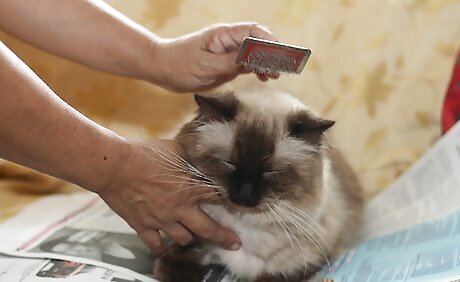
Groom your cat. Many cats enjoy being groomed, at least occasionally. If yours is not feeling well, it may appreciate the attention. Grooming your cat also provides an opportunity to inspect your cat’s fur and skin. Their condition can often indicate whether or not your cat is well.
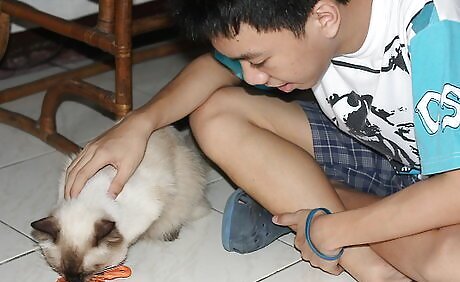
Feed the cat maintenance food. Generally, you can feed your cat any kind of food that is nutritionally balanced and formulated for felines. If your cat is sick and seems reluctant to eat, you can offer it maintenance food, which is formulated to be especially palatable. Maintenance food is generally canned, and should be available at pet supply stores or wherever cat food is sold. Normally, you can feed your cat either wet or dry food according to its preference. If you want to ensure quality, you can look for cat food that is certified by the Association of American Feed Control Officials (AAFCO). If your cat is reluctant to eat, you can warm its food first, offer its favorites, or try giving it small portions. If it still does not want to eat after 24 hours, contact a vet.

Look for signs that the cat is sick. Cats, like humans, are susceptible to a number of diseases, pains, and other conditions. Since you can’t know directly how your cat is feeling, you will have to look for various signs that can indicate a problem. These may include: Decreased appetite Vomiting or diarrhea Swollen abdomen Loss of hair Dull or patchy coat Flaking or scabs Bad odors or breath Unexplained lumps Discharge from eyes or nose Red, watery eyes Difficulty moving Red gums Drooling Frequent sneezing Unusual vocalization Change in social habits Reluctance to groom Sudden decrease in sleep time

Consult a vet if problems continue. If your cat shows any worrisome signs, keep a close watch on it. If the symptoms do not improve within 24 to 48 hours, contact a vet. Lingering problems can indicate a serious condition that requires professional attention.
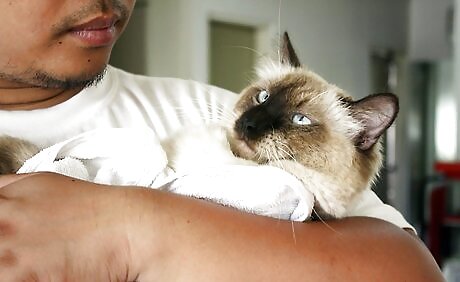
Take the cat to the vet immediately if necessary. In some cases, your cat may display symptoms that are severe enough to warrant consulting a vet right away. Warning signs include: Inability to urinate Blood in urine Swollen abdomen Excessive vomiting or diarrhea Seizures

Give medications as necessary. If a vet prescribes medication for your cat, get it right away. Give your cat the medication according to the package instructions and/or any additional advice provided by your doctor. Make sure that your cat takes the medication for as long as the vet advises. Do not stop giving your cat the medication even if its symptoms disappear (unless specifically advised to do so by the vet).

Don’t give your cat human medications. Even if your cat appears in pain, you should never give it any medication that is intended for humans. Painkillers and other medications that humans use can be dangerous to cats. Even vitamins can be toxic to felines. If you think that your cat needs any kind of medication, consult a vet for specific recommendations.
Treating Common Diseases
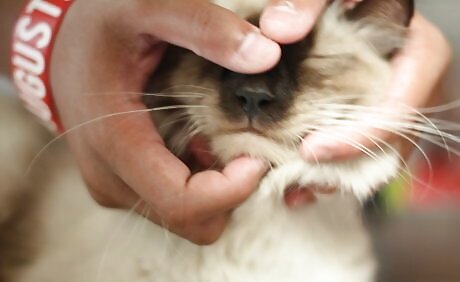
Treat the symptoms of upper respiratory infections. Like humans, cats can get a variety of upper respiratory infections that cause symptoms like wheezing, coughing, and a runny nose. Rest, a good diet, and plenty of fluids are generally recommended as treatment. A vet can also examine your cat to determine if any medications will help your cat recover. If your cat is suffering from cat flu or an upper respiratory infection, you can wipe away any discharge from its nose or eyes using warm salt water (a teaspoon of salt mixed into a pint of clean water).
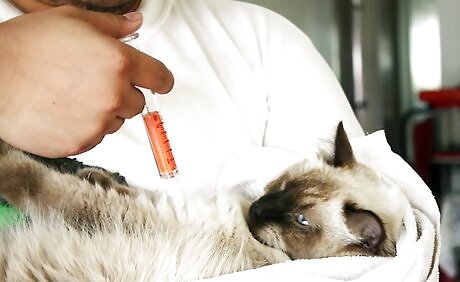
Administer treatments for feline diabetes. Cats can suffer from multiple types of diabetes. Depending upon the severity of the condition at the time of diagnosis, your cat may need to be hospitalized. Oral medications and insulin treatment are commonly recommended to care for a cat with diabetes. Glucose tests may also be required, and a vet can show you how to administer these at home. Talk to a vet about testing your cat for feline diabetes if it has a noticeable change in appetite (it eats more or less than previously), drinks lots of water, urinates frequently, has breath that smells sweet, or is lethargic.

Administer medications and special baths if your cat if infected with ringworm. Ringworm is a fungus that can cause hair loss and red rings on a cat’s skin. If you see or suspect these symptoms, contact a vet immediately. Medications, bathing, and special shampoos can help your cat recover. Take care when handling a cat with ringworm, since the infection can pass to humans.
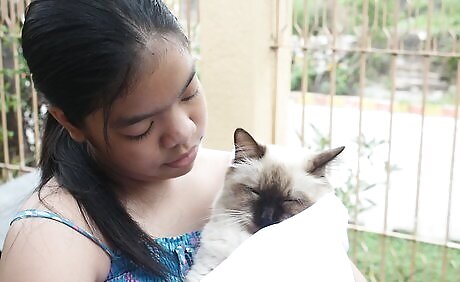
Treat the symptoms of heartworm. The heartworm parasite is transmitted by mosquitos. Once a cat is infected, symptoms such as coughing, wheezing, and loss of appetite can occur. There are no approved medications in the US for treating feline heartworm infection, although there are some that can prevent it. If your cat develops a heartworm infection, it may be able to fight it off on its own, but a vet can prescribe medications to treat symptoms like coughing and vomiting. Though some cats can beat a heartworm infection on their own, others can suffer heart and lung problems, kidney or liver damage, and even sudden death.
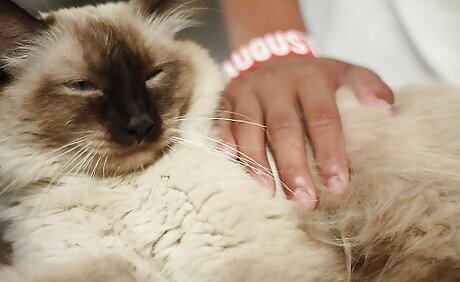
Consult a vet if your cat has intestinal parasites (“worms”). Various roundworms, hookworms, tapeworms, and other parasites can infect cats, particularly those that spend time outside. They can cause a variety of symptoms and problems, including trouble breathing, anemia, and weight loss. Take your cat to a vet if you see unusual symptoms or suspect that it has a parasite. He or she can prescribe the appropriate medication or treatment. Some worms or parts of them may be visible on or near your cat’s anus. Keep your yard and home clear of cat feces, since many worms are transmitted by contact with it. Wear gloves and take care when handling a cat that you suspect has a parasite (or the cat’s feces), since it can pass to humans in some cases. Only give your cat deworming medication that is approved by your vet. The wrong medication (or one intended for dogs or other animals) may harm your cat.
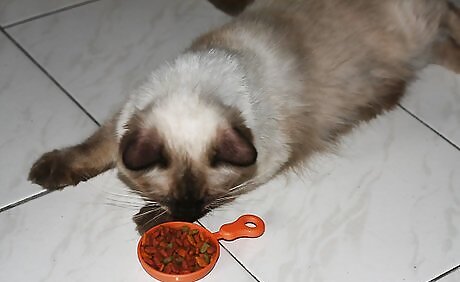
Treat the symptoms of Feline Immunodeficiency Virus (FIV). FIV is a viral infection that a cat may have for some time before the problem is diagnosed. The virus can cause a variety of symptoms. There is currently no specific treatment for FIV, but a vet can prescribe medications to treat symptoms or secondary infections, as well as make dietary recommendations to improve your cat’s quality of life. Common signs of FIV include: weight loss, diarrhea, loss of appetite, inflamed eyes, poor coat quality (patches of missing hair, reddened skin, etc.), sneezing, or discharge from the eyes or nose. FIV can be transmitted from cat to cat, but not from a cat to a human.
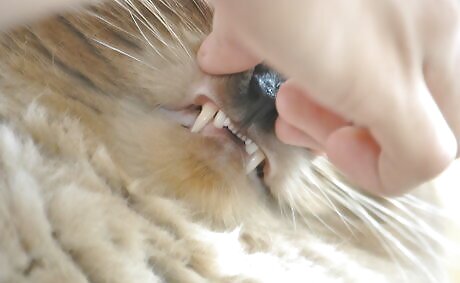
Comfort and isolate a cat with Feline Leukemia Virus (FeLV). FeLV can cause problems with your cat’s immune system, as well as a variety of symptoms. There is no cure for FeLV, but a vet can make recommendations regarding the best diet for your cat. Diets for cats should be free of raw meat, eggs, unpasteurized dairy products, and other foods that could cause infections. Rest and quiet can also make your cat more comfortable. Some cats infected with FeLV may show no symptoms. Others may have symptoms including a poor appetite, diarrhea, vomiting, gum problems, and respiratory issues. Like FIV, FeLV is contagious only between cats, not between cats and humans. Keeping your cat away from other felines can help reduce the spread of the disease.
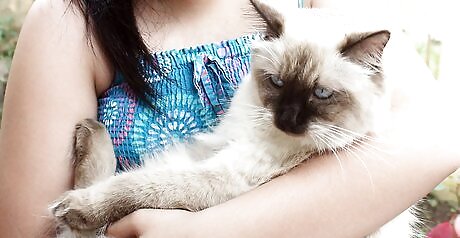
See a vet for recommendations on treating feline cancer. Cancer can have a variety of causes in cats, as in humans. Your cat’s vet can talk with you about treatment plans, which may involve chemotherapy, radiation therapy, and surgery. In some cases, pain relief (palliative care) is chosen for the sake of the cat’s quality of life.
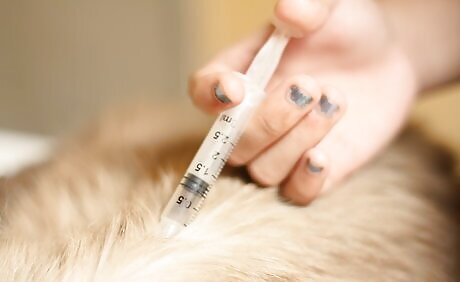
See a doctor immediately if you suspect your cat has rabies. Rabies is typically caused by a bite from an infected animal, and cause aggressive or erratic behavior, seizures, and paralysis. Unfortunately, rabies is almost always fatal. If you suspect that your cat is infected with rabies, contact a vet immediately. Use extreme care when handling the animal, since the disease can pass to humans as well. If your cat is up-to-date on its rabies vaccinations, it can be given a booster immediately and closely monitored to determine if it will recover.
Caring for a Vomiting Cat
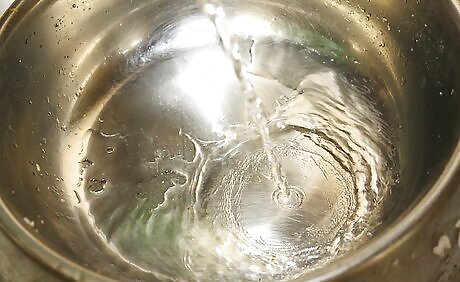
Give your cat water. Vomiting can accompany many common cat illnesses, as well as occasional digestive problems. If your cat has vomited, offer it plenty of fresh, clean water. If your cat vomits frequently, especially within a brief period, contact a vet.

Withhold the cat’s food. For cats with an occasional vomiting problem, keeping them away from food for 24-48 hours can give their digestive system time to recover. If your cat vomits even after having water, you can also withhold it for up to 24 hours. However, do not withhold water from a cat with known or suspected kidney disease.
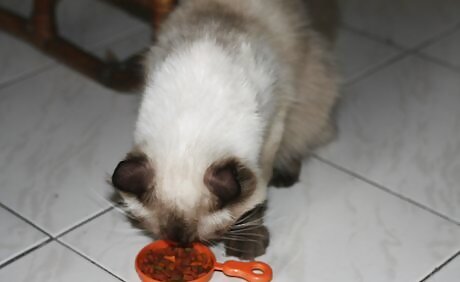
Provide a bland diet. After the vomiting has stopped for a time, you can begin feeding your cat again. Try offering small amounts, 3-6 times a day. The food should be bland so as to not upset the cat’s digestive system again. Good suggestions for a bland diet include boiled, skinless chicken or white fish, such as cod. Over the course of a few days, gradually increase the amount you feed the cat. After a few days on a bland diet, begin mixing a small portion of your cat’s regular food with the bland foods. Start with something like 1 part regular food to 3 parts bland food. If your cat seems to handle the mixed food without a problem, wait a day or two and mix one-half regular food and one-half bland food. After a day or so of that, try 3 parts regular food to one part bland food. If that also works, then you can go back to feeding your cat only its regular food.




















Comments
0 comment